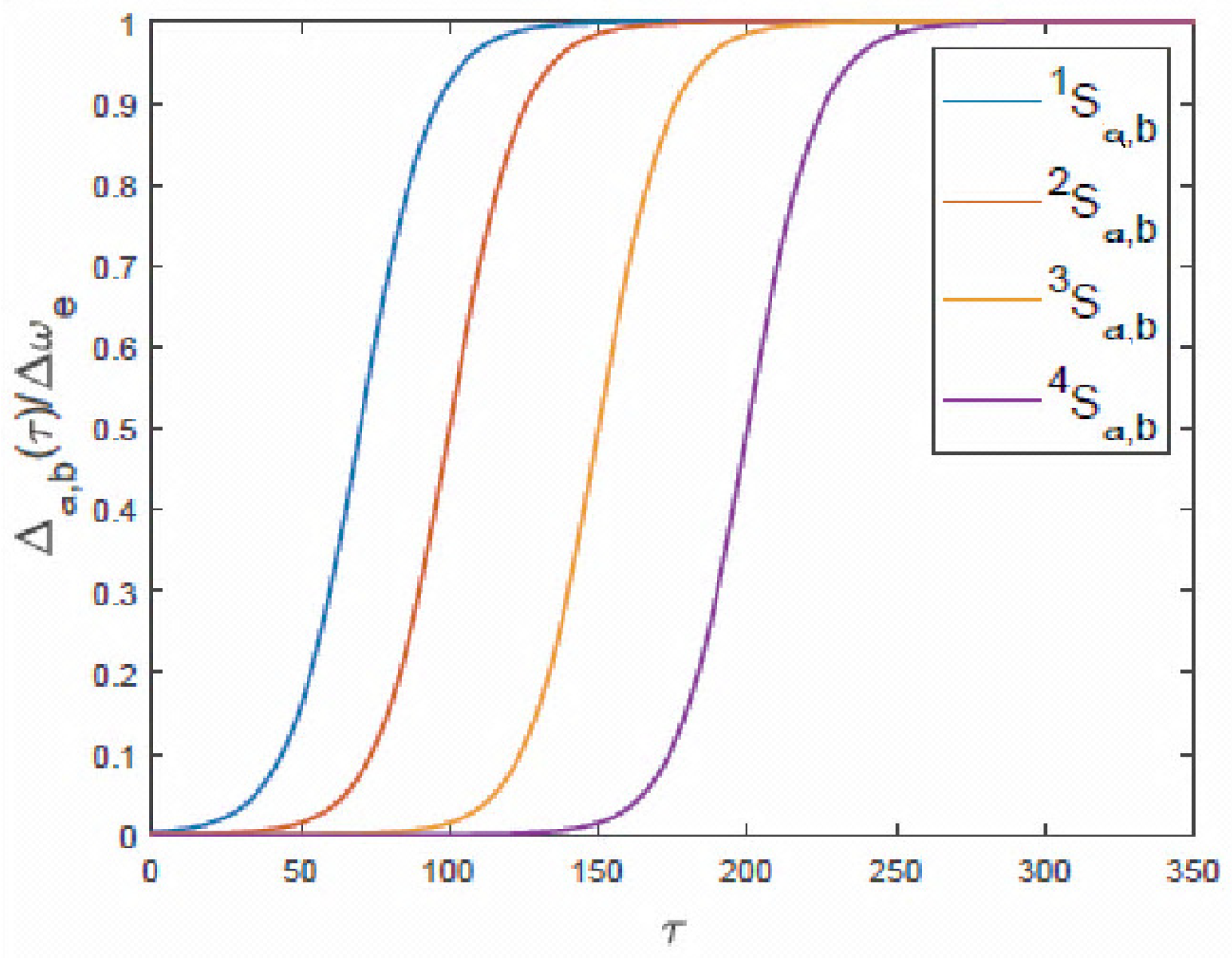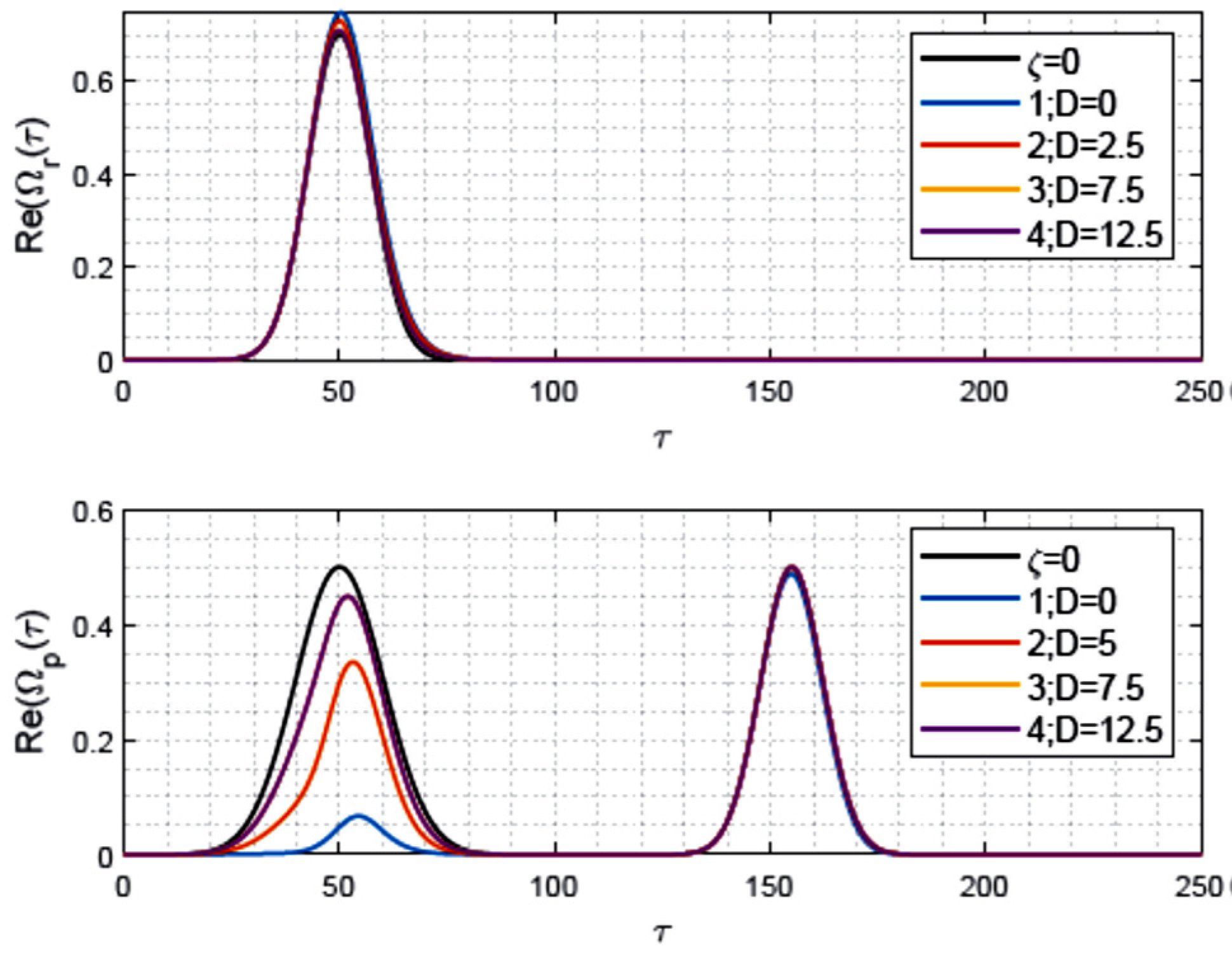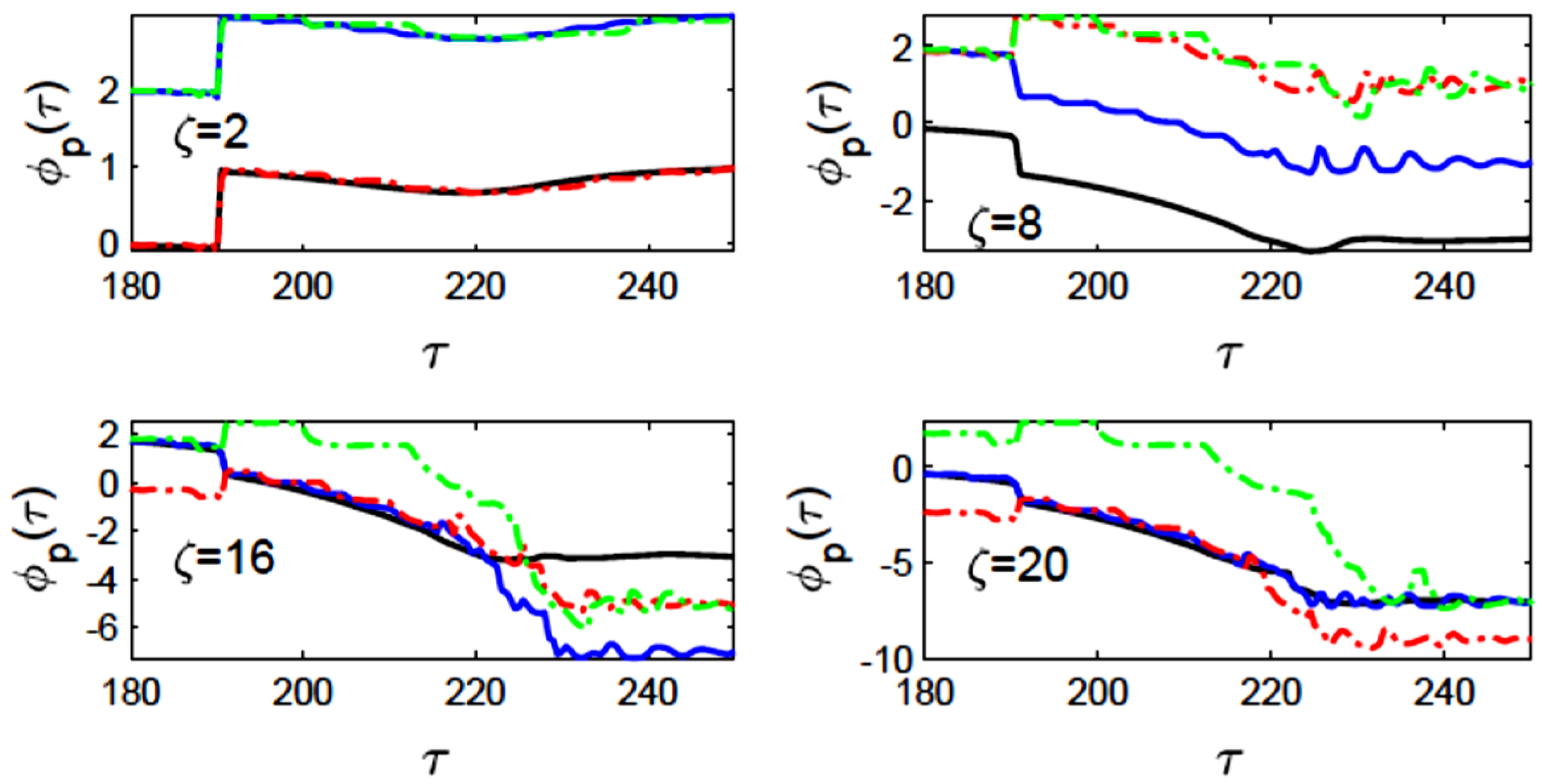Influence of Frequency-Sweep on Discrete and Continuous Phase Distributions Generated in Alkali-Metal Vapours †
Abstract
:1. Introduction
2. The Atomic System and Its Optical Excitation Scheme
δr(t) = ωr(t) − ω32,
δr(T, a, b) = Δωe ∗ Sr(T, a, b).
3. Numerical Results
Pulse Profiles, Energy, Phase, and Propagation


4. Conclusions
Author Contributions
Funding
Institutional Review Board Statement
Informed Consent Statement
Data Availability Statement
Conflicts of Interest
References
- Alhasan, A.M.; Abdulrhmann, S. Multilevel Phase Switch Generation in Alkali Vapors. Eng. Proc. 2023, 31, 69. [Google Scholar]
- Alhasan, A.M.; Altowyan, A.S.; Madkhli, A.Y.; Abdulrhmann, S. Multiple Phase Stepping Generation in Alkali Metal Atoms: A Comparative Theoretical Study. Appl. Sci. 2023, 13, 3670. [Google Scholar] [CrossRef]
- Sigmoidal Membership Function. Available online: https://www.mathworks.com/help/fuzzy/sigmf.html (accessed on 27 July 2023).
- Allen, L.; Eberly, J. Optical Resonance and Two-Level Atoms; Courier Corporation: New York, NY, USA, 1975; pp. 101–104. [Google Scholar]
- Kaviani, H.; Khazali, M.; Ghobadi, R.; Zahedinejad, E.; Heshami, K.; Simon, K. Quantum storage and retrieval of light by sweeping the atomic frequency. New J. Phys. 2013, 15, 085029. [Google Scholar] [CrossRef]
- Fleischhauer, M.; Lukin, M.D. Quantum memory for photons: Dark-state polaritons. Phys. Rev. A 2002, 65, 022314. [Google Scholar] [CrossRef]
- Steck, D.A. Rubidium 87 D Line Data. (Version 2.2.2, Last Revised 9 July 2021). Available online: http://steck.us/alkalidata (accessed on 27 July 2023).
- Chathanathil, J.; Ramaswamy, A.; Malinovsky, V.S.; Budker, D.; Malinovskaya, S.A. Chirped Fractional Stimulated Raman Adiabatic Passage. Phys. Rev. A 2023, 108, 043710. [Google Scholar] [CrossRef]
- Sawyer, B.J.; Chilcott, M.; Thomas, R.; Deb, A.B.; Kjærgaard, N. Deterministic quantum state transfer of atoms in a random magnetic field. Eur. Phys. J. D 2019, 73, 160. [Google Scholar] [CrossRef]
- Fiutak, J.; van Kranendonk, J. The effect of collisions on resonance fluorescence and Rayleigh scattering at high intensities. J. Phys. B At. Mol. Phys. 1980, 13, 2869–2884. [Google Scholar] [CrossRef]
- Alhasan, A.M. Entropy Associated with Information Storage and Its Retrieval. Entropy 2015, 17, 5920–5937. [Google Scholar] [CrossRef]
- Alhasan, A.M.; Czub, J.; Miklaszewski, W. Propagation of light pulses in a (j1 = 1/2) ↔ (j2 = 1/2) medium in the sharp-line limit. Phys. Rev. A 2009, 80, 033809. [Google Scholar] [CrossRef]




Disclaimer/Publisher’s Note: The statements, opinions and data contained in all publications are solely those of the individual author(s) and contributor(s) and not of MDPI and/or the editor(s). MDPI and/or the editor(s) disclaim responsibility for any injury to people or property resulting from any ideas, methods, instructions or products referred to in the content. |
© 2023 by the authors. Licensee MDPI, Basel, Switzerland. This article is an open access article distributed under the terms and conditions of the Creative Commons Attribution (CC BY) license (https://creativecommons.org/licenses/by/4.0/).
Share and Cite
Alhasan, A.M.; Abdulrhmann, S. Influence of Frequency-Sweep on Discrete and Continuous Phase Distributions Generated in Alkali-Metal Vapours. Eng. Proc. 2023, 56, 161. https://doi.org/10.3390/ASEC2023-15979
Alhasan AM, Abdulrhmann S. Influence of Frequency-Sweep on Discrete and Continuous Phase Distributions Generated in Alkali-Metal Vapours. Engineering Proceedings. 2023; 56(1):161. https://doi.org/10.3390/ASEC2023-15979
Chicago/Turabian StyleAlhasan, Abu Mohamed, and Salah Abdulrhmann. 2023. "Influence of Frequency-Sweep on Discrete and Continuous Phase Distributions Generated in Alkali-Metal Vapours" Engineering Proceedings 56, no. 1: 161. https://doi.org/10.3390/ASEC2023-15979
APA StyleAlhasan, A. M., & Abdulrhmann, S. (2023). Influence of Frequency-Sweep on Discrete and Continuous Phase Distributions Generated in Alkali-Metal Vapours. Engineering Proceedings, 56(1), 161. https://doi.org/10.3390/ASEC2023-15979






